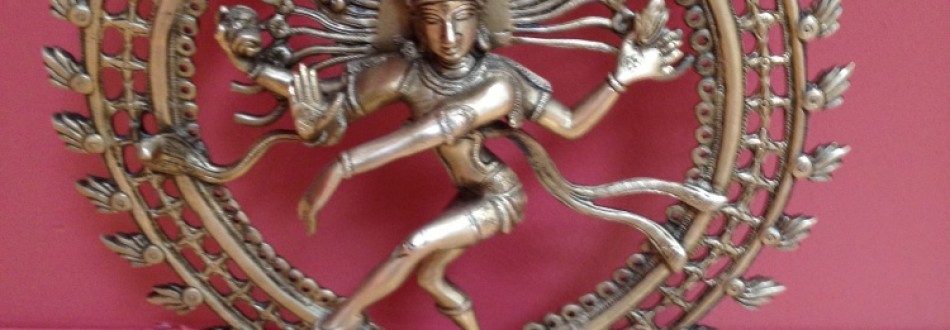First, it is seen as the image of his rhythmic play which is the source of all movement within thuniverse. This is represented by the circular or elliptical frame surrounding the Lord. Secondly, the purpose of his dance is to release the souls of all men from the snare of illusion Lastly, the place of the dance, Chidambaram, which is portrayed as the center of the universe, is actually within the heart. Dancing is seen as an art in which the artist and the art s/he creates are one and the same, thought to evoke the oneness of God and creation. In the compact spiritual texts of divine knowledge, the holy Geeta, there are three basic guna: Satvic, Tamsic and Rajsic. These combine with each other, and the life forms are created as a result of this divine activity. These life forms remain devoid of prana (breath), until the Divine entity infuses them with life. The Geeta says the division of the Divine entity is ninefold, of which eight can be known by humans, but the ninth is eternally unexplainable and hidden and secret. These eight divisions are the elements, Earth, Water, Fire, Air, Akash, Mana, Buddhi, Ahamkara. Nataraj is a visual interpretation of Brahman and a dance posture of Lord Shiva. It is the representation of reality at the time of cosmic destruction. We being life forms, cosmic destruction would mean the disappearance of all life. The half moon shown in the head of Nataraj is a symbol only. The fall of the moon would result in cosmic destruction. The third eye on the forehead of the Lord is a symbol. The serpent wrapped around the neck is a cosmic entity, just as Shiv. Other vedic texts mention a cosmic serpent called Kundalini, present in every living form at the base of the spinal cord. Myths abound about Kundalini’s presence and the cosmic dangers associated with its arousal. More abstract and invisible divine energy centres, called Chakras, are associated with its Rise.

